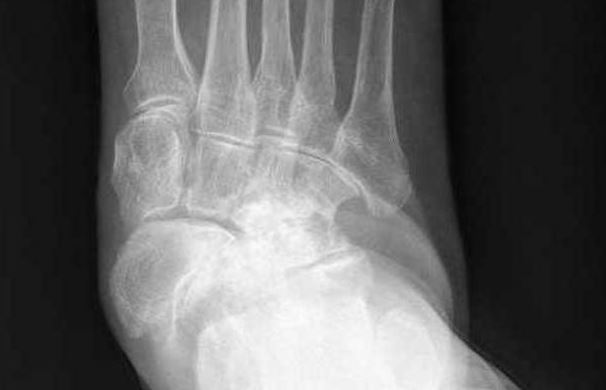Mueller-Weiss Syndrome is a rare foot condition that affects the navicular bone, which is located in the midfoot at the top of the arch. It is considered a form of osteonecrosis, which is the death of bone tissue due to a lack of blood supply.
In Mueller-Weiss Syndrome, the blood supply to the navicular bone becomes impaired, leading to progressive degeneration and collapse of the bone. This condition is typically seen in adulthood and can affect both men and women. It is different from the Kohler’s Disease that affects the navicular bone in children.
The exact cause of Mueller-Weiss Syndrome is not entirely understood, but it is believed to involve a combination of factors, including mechanical stress on the bone, genetic predisposition, and vascular abnormalities. Those who get Mueller-Weiss Syndrome may experience pain, swelling, and difficulty walking. As the condition progresses, deformity of the midfoot may occur. Diagnosis is typically made through a combination of clinical evaluation, imaging studies (such as X-rays or MRI), and sometimes a bone scan to assess blood flow to the affected area.
The treatment for Mueller-Weiss Syndrome depends on the severity of the condition and may include conservative measures like rest, immobilization with a cast or boot, pain management, and orthotic devices to support the foot. In more advanced cases, surgical intervention such as bone grafting, realignment procedures, or even fusion of the affected joint may be necessary to relieve pain and restore function.
The most famous case of Mueller-Weiss Syndrome was Rafael Nadal, the Spanish tennis player. He missed a number of grand slam tournaments because of it and did sometimes play with local anaesthetic injections.

